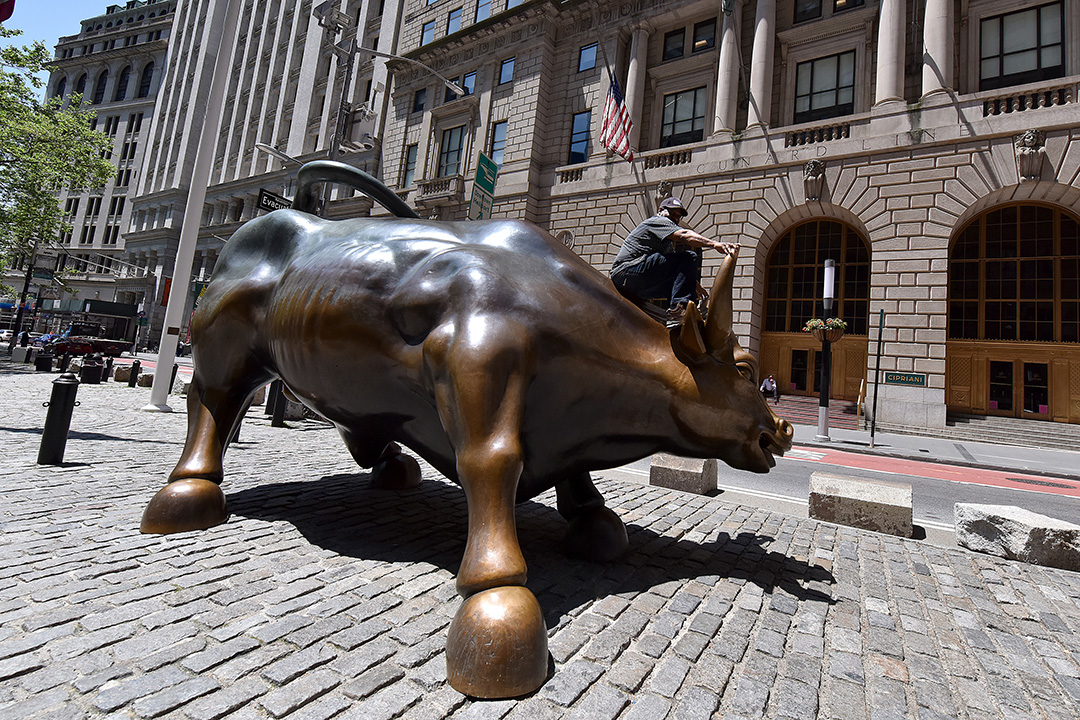

The normal person simply can’t work out this rebound of the stock market, so I thought it was time to explain how a pandemic-caused closure of our economies and a big chunk of the world has resulted in a massive stock-price rebound that has taken our share market and Wall Street out of bear market territory.
Those who’ve been petrified by the avalanche of scary headlines and daily news stories on TV and radio that add up the world infections and deaths, interspliced with predictions of a 10% economic contraction and 10% unemployment here in Australia, just can’t comprehend this chart of the hi-tech Nasdaq Index in the US.
Nasdaq
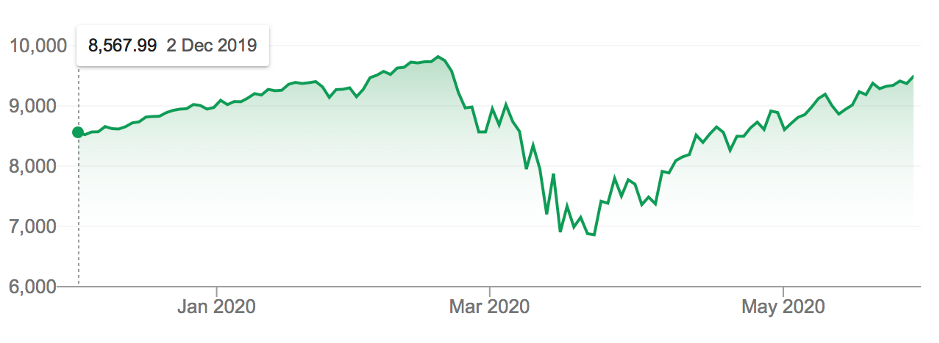
This index is the home of the FAANG stocks i.e. Facebook, Amazon, Apple, Netflix and Google (Alphabet). It explains why the Coronavirus crash has nearly been wiped out! These are some of the best companies in the world that a billion plus people use on nearly a daily basis.
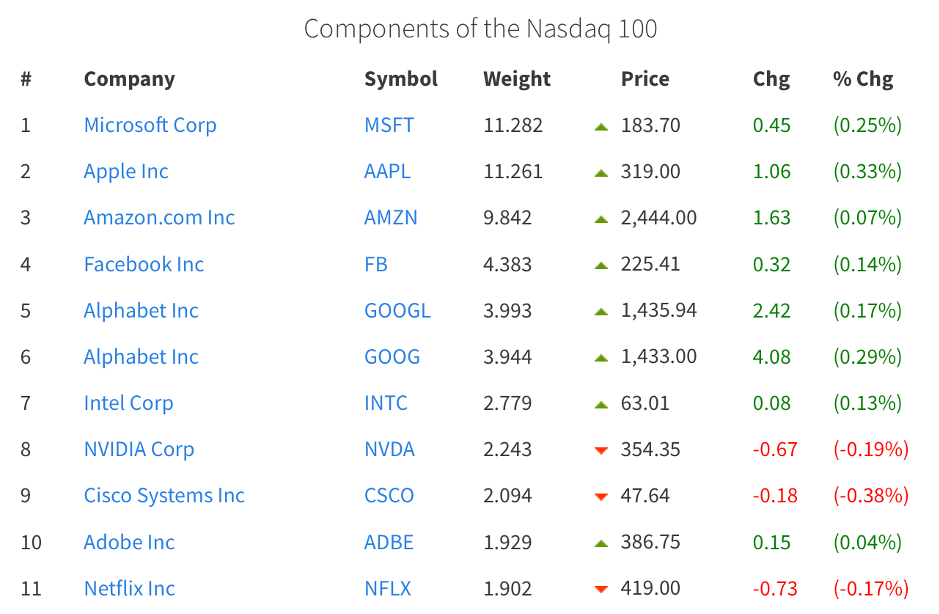
Other stock markets have not rebounded so enthusiastically but ones like our S&P/ASX 200 Index have got out of bear market territory, which is defined as a 20% slump in the index.
S&P/ASX 200 Index
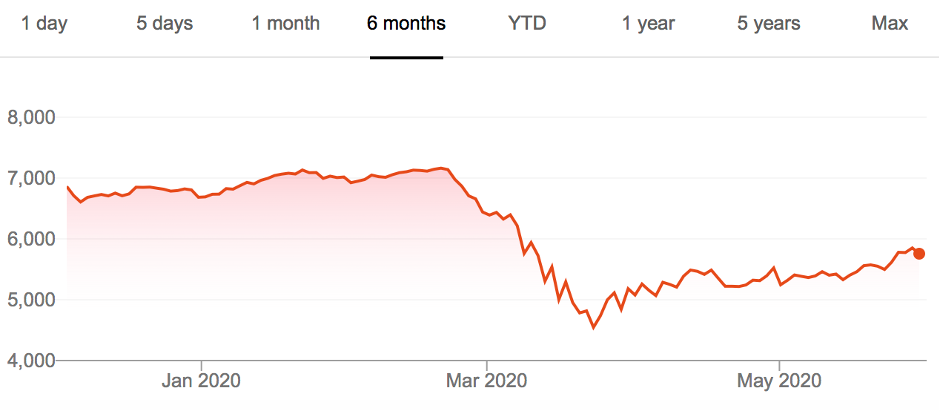
Right now, we’re down 19.6% but considering we were down around 37% when the world realised that the virus had travelled to Italy and was a real deal pandemic that would close down world economies, that’s an extraordinary comeback from the stock market dead.
So what explains why stock players are buying not only companies that are perennial good performers in all sorts of economies (such as Woolworths and Coles) but lately the smarties have been chasing companies that are in industries that have been smashed by COVID-19 and the responses of governments worldwide to its threat?
Let me list the reasons. Here goes:
We’ve broken the world record for growing without a technical recession for 29 years. And the very fact some economists think we’ve got a chance to keep on dodging a recession bullet explains why bank stocks spiked last week.
The likes of NAB was up nearly 14% in a week and its rivals also had big weeks. This market action is saying that if our economy isn’t as smashed as we thought when the Prime Minister and Treasurer talked about a six month hibernation period, then our banks will have less defaults and a shorter time letting people defer their home loan repayments.
Clearly, you get the picture. The combined impact of better-than-expected virus infection/death news, combined with better economic indicators, as well as opening up economies faster than expected, has raised investor confidence levels, as this Morgan Stanley Equity Risk Indicator below shows.
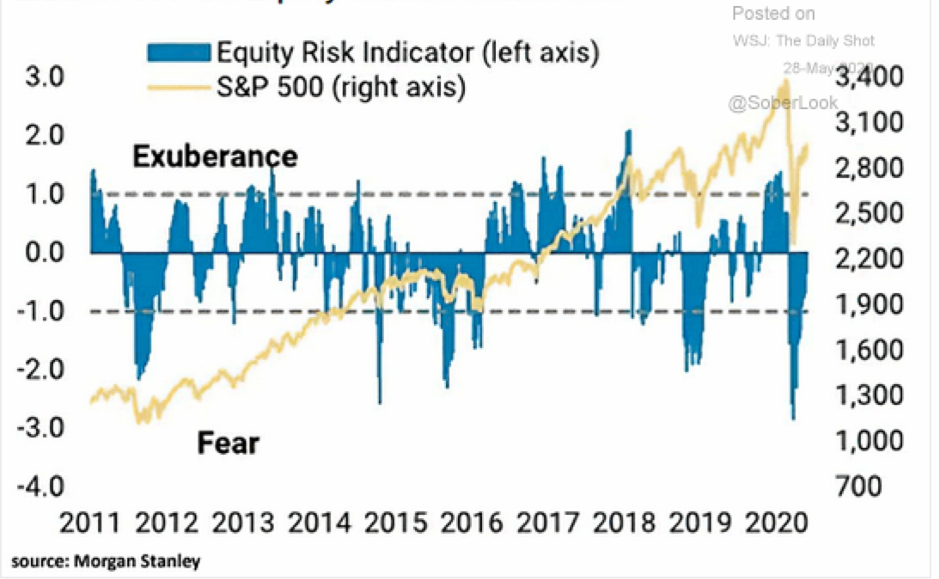
The blue areas under the 0.0 line or axis was when fear was killing stock markets. Note how exuberance dominated before February but it’s now back to the 0.0 line, which says investors are neutral on stocks i.e. neither fearful nor exuberant.
It’s a classic wait-and-see situation but the rebound of stocks from the March 23 lows is screaming out that the consensus view is now that we just might get out of this pandemic-created market crash and recession with a lot less losses than we thought.
Let’s hope they’re right. To throw in a bit of positivity from those famous for negativity, this is what Tony Morriss, the Bank of America head of Australia and New Zealand Economics team has pointed to: “The housing sector was starting to pick up and mining investment increased slightly,” in the quarter so he’s forecasting a 0.1% increase.
If the headline number for economic growth isn’t negative on Wednesday, then this will be a big psychological boost for the economy. Stock-buying so far has been directly related to our quicker-than-expected win over the Coronavirus, which led the RBA Governor Dr Phil Lowe to tell the COVID-19 committee that this should deliver an economic dividend not expected when forecasts of 10% unemployment and 10% economic contraction were made public by the likes of Treasury.